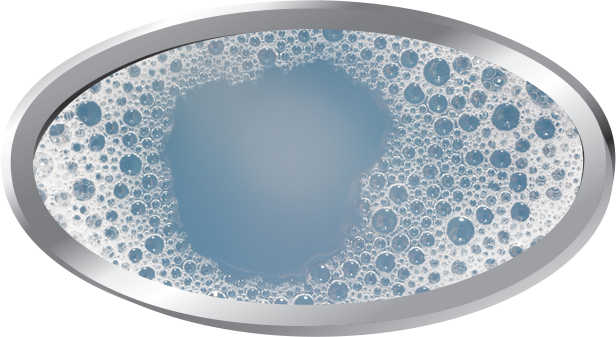How Defoamers Can Save Time and Money in Industrial Production
How Defoamers Can Save Time and Money in Industrial Production
Blog Article
The Function of Defoamers in Enhancing Item Quality and Performance
In various making processes, the presence of foam can significantly prevent item quality and operational efficiency. Defoamers function as essential additives that mitigate this issue, making certain smoother production process while improving the functional and aesthetic qualities of the final items (defoamers). Their application extends a multitude of sectors, from food and drink to drugs, where uniformity and integrity are extremely important. The selection of the ideal defoamer can be essential to accomplishing optimum outcomes, increasing essential questions about formula compatibility and performance metrics that warrant further exploration.
Comprehending Defoamers
Recognizing the function of defoamers is important for keeping item top quality throughout various industries. Defoamers are chemical ingredients designed to avoid the development and lower of foam in liquid systems, which can negatively affect processes such as blending, loading, and surface tension. Lathering can bring about ineffectiveness, product flaws, and compromised aesthetic allure, making defoamers an essential component in producing procedures.
In commercial applications, defoamers help to boost item consistency and stability. The effective usage of defoamers not only makes sure smoother production processes yet likewise contributes to exceptional product efficiency.
Furthermore, the choice and formulation of a defoamer must straighten with specific application requirements, such as compatibility with various other active ingredients, efficiency under varying temperature level and pH conditions, and prospective regulatory restraints. Ultimately, comprehending defoamers' features and their relevance in numerous formulas is important for optimizing manufacturing and guaranteeing the highest high quality output.
Sorts Of Defoamers
Defoamers can be categorized right into a number of types based upon their structure and device of action. The main kinds include silicone-based, non-silicone natural, and inorganic defoamers.
Silicone-based defoamers are among one of the most efficient, mainly as a result of their capacity to spread out rapidly on the fluid surface and disrupt foam formation. Their unique chemical structure permits premium security, making them ideal for high-temperature applications and settings with differing pH degrees.
Non-silicone organic defoamers, often composed of all-natural oils or fatty acids, are valued for their biodegradability and lower toxicity. These are commonly made use of in food and beverage applications where safety and security and ecological impact are vital.
Inorganic defoamers, which consist of compounds like talc or calcium carbonate, act by enhancing the thickness of the fluid, consequently decreasing foam security. They are typically made use of in commercial procedures where compatibility with various other products is not an issue.
Each kind of defoamer has distinctive advantages and constraints, enabling customized remedies depending on the certain frothing concerns encountered in various applications. Understanding these differences is vital for maximizing efficiency and accomplishing wanted item high quality.
Applications Across Industries
Various sectors take advantage of defoamers to boost item high quality and functional performance. In the food and beverage market, defoamers are critical in procedures such as brewing and dairy manufacturing to prevent foam development, which can cause ineffectiveness and item inconsistency. By controlling foam, manufacturers can make sure far better return and an extra consistent product.
In the pharmaceutical sector, defoamers play a crucial duty in the formula of liquid drugs, where excessive foam can restrain mixing and accurate application. Their use aids keep the integrity of the formulations and promotes smoother manufacturing procedures.
The paint and finishes industry likewise relies on defoamers to improve the efficiency of items during application. By minimizing foam, these additives ensure a smoother coating and improve the aesthetic top qualities of the last item.

Advantages of Utilizing Defoamers
While the application of defoamers varies throughout sectors, their benefits constantly enhance item top quality and procedure efficiency. One substantial advantage is the reduction of foam formation during manufacturing procedures, which can otherwise lead to production hold-ups and variances in product high quality. By decreasing foam, defoamers allow a smoother flow of products, promoting a lot find out here now more efficient procedures and reducing the probability of tools malfunctions.
In addition, using defoamers can boost the look and appearance of final products. In fields such as layers, paints, and food processing, too much foam can compromise the aesthetic aesthetic appeals and total quality, while the ideal defoamer application guarantees an uniform coating and preferable features. Additionally, defoamers can add to cost savings by lowering waste throughout production and optimizing the usage of basic materials (defoamers).

Selecting the Right Defoamer
Choosing the right defoamer is critical for optimizing production procedures and making certain item high quality. The selection of defoamer influences not only the performance of foam control however additionally the total efficiency characteristics of the final item. Aspects to consider consist of the kind of application, the chemistry of the solution, and the ecological problems under which the item will certainly be made use of.
Various industries her response may call for specific defoamer types, such as silicone-based, natural, or polymeric defoamers. Comprehending the compatibility of the defoamer with the key ingredients is necessary to stay clear of adverse responses that can compromise product honesty. Furthermore, the defoamer's effectiveness in various temperature levels and pH degrees should be assessed to make sure consistent efficiency.
Checking the defoamer in small-scale applications can give useful insights right into its performance and suitability. Factor to consider of regulatory conformity, especially in food, drugs, and cosmetics, is vital in choosing a defoamer. Eventually, a detailed analysis of these variables will certainly cause the selection of a defoamer that not only manages foam successfully but likewise enhances the high quality and efficiency of the final product.
Final Thought

In verdict, defoamers are crucial ingredients that substantially improve product quality and efficiency across numerous markets. The critical choice and application of defoamers lead to set you back savings, optimized source usage, and increased consumer fulfillment.
Frothing can lead to inadequacies, item issues, and jeopardized visual appeal, making defoamers an important element in manufacturing operations.

Report this page